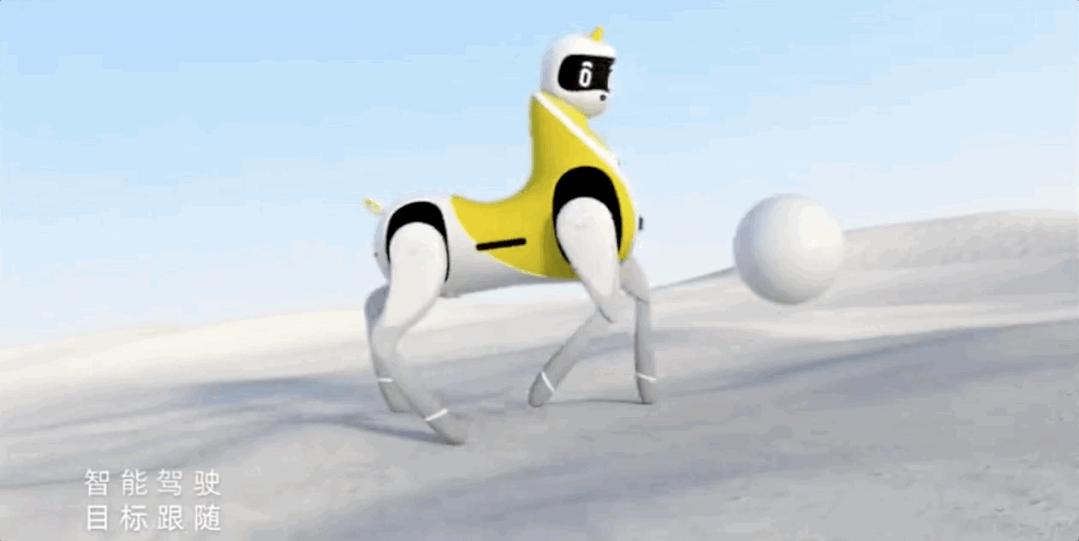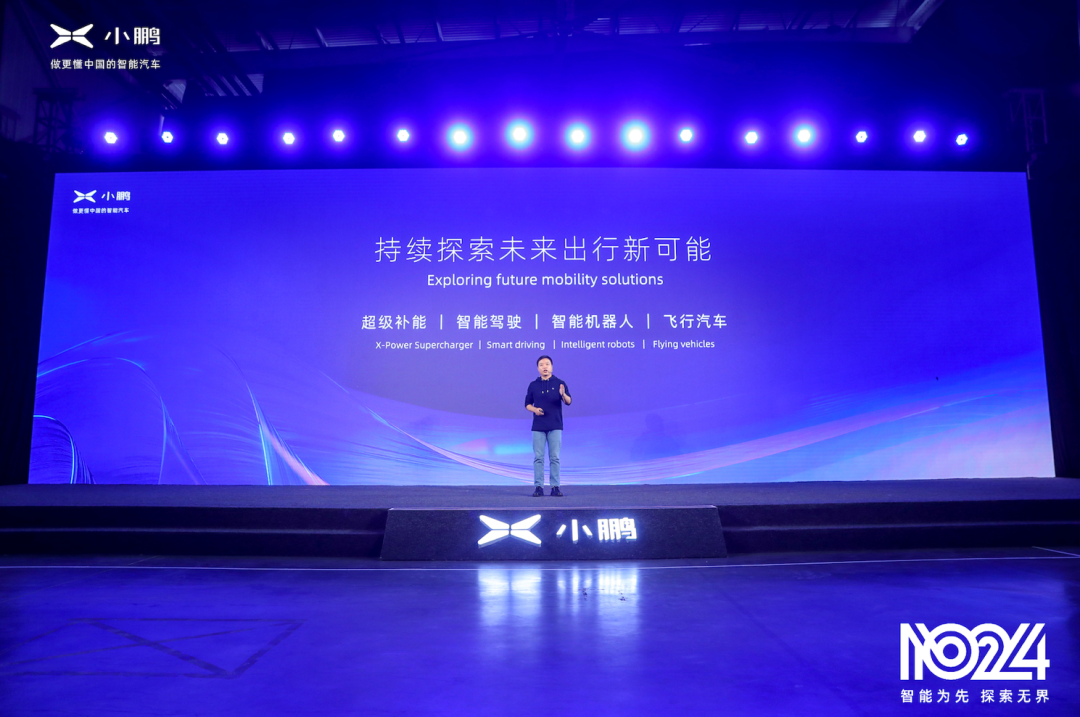*This article is reproduced from the Autocarweekly WeChat official account.
Author: Karakush
It’s difficult for me to refer to XPeng as XPeng Motors anymore.
Such one-dimensional definition would be an insult to the diverse products of Xpeng Universe.
Yesterday was 1024 Xpeng Technology Day, at which He XPeng revealed Xpeng Universe’s four major advancements: charging supplement energy, autonomous driving, robotic equines, and flying cars….
So, qualitatively speaking, in addition to being a car company, Xpeng is at least an energy company, a mecha monster company, and a low-altitude carrier company.
(Although some of these products fall outside of XPeng Motors’ ecosystem, such as the flying car, which is owned by Xpeng Huitian, and the robotic equine, which is owned by Pengxing Intelligent… it does not hinder the logging work.)
Xpeng takes its various undertakings seriously, “We never make concept cars or display cars, ” said He XPeng, “all of our explorations are for mass production, which will change our intelligent travel lifestyle.” Xpeng even set a target of mass producing flying cars by 2024.

In retrospect, we often mention Weimotors, new forces, but they are already like split ends, their essence having long separated. However, 1024 culture can help us understand their fundamental differences.
He went to the second half of the game first
This is reflected in their positions on autonomous driving. Xpeng had long advocated full-stack self-reliance. With the exception of Tesla, XPILOT is the fastest advancing autonomous driving product on the market, and provides exemplary driving experiences.
Reflected in data, according to Dr. Wu Xinzhou, VP of Autonomous Driving at XPeng, XPeng’s NGP has already accumulated a driving distance of 11.98 million km, while VPA has accumulated 20,731 memories of parking lots and parking routes, making high speed NGP penetration reach 60% by the third quarter of this year.

If it is easy to use, it must be used extensively. Habit formation among users has shown that XPILOT is not a unilateral attempt. XPeng has successfully verified their product in the market and demonstrated that full-stack self-reliance is not only feasible but also capable of forming a certain competitive advantage. These are the results up to XPILOT 3.0.

From the recent P5 launch, XPeng will release XPILOT 3.5, which will shift its focus from high-speed scenarios to urban scenarios.According to XPeng’s research, highways only account for 10% of a normal user’s driving time, which is not a particularly frequent scenario. However, by connecting to the city, that 10% can become 90%, allowing you to truly occupy the user’s driving time. XPeng proposed that “the landing of urban scenarios signifies the start of the second half of intelligent assisted driving.”
Just starting is already a completely different level of difficulty than before because there are no restrictions on traffic participants. There are several noteworthy technological capabilities of the 3.5:
Firstly, it has city positioning accuracy reaching the centimeter level. It does not rely on laser point clouds, but instead utilizes multi-sensor fusion positioning, including visual, high-precision maps, GPS, IMU, and wheel speed sensors; it covers various terrains such as city buildings, elevated bridges, tunnels, and more; and it has more precise static information on city high-precision maps that can be updated daily. It is worth noting that it is the industry’s first volume production accomplishment.
Secondly, it has quadruple perception fusion, including dual vision (camera, panoramic camera), millimeter-wave radar, and laser radar. It is vision-centric with millimeter-wave and laser radar as auxiliary tools, enabling it to identify, classify, and locate more types of targets with an accuracy of up to decimeters. For example, it can more accurately determine the position and speed of objects and understand the orientation and posture of pedestrians.
Thirdly, it is designed for predicting and planning for urban scenarios. For example, it can achieve some iconic actions, including the extreme lane change of the full-speed domain and avoiding stationary objects and vulnerable traffic participants (bicycles, electric vehicles). It should be able to understand the relationship between the current vehicle and the neighboring vehicles and between those neighboring vehicles, and the response strategy should not only be based on rules but also on data for better strategic maneuvering. Additionally, it should add driving strategies for dynamic traffic, static road network, local road surfaces, and other situations.
In addition to its functionality, XPeng believes that urban NGP is more of a service. It must be easy to use, available, and safe. Apart from its own design, user experience needs to be iterated through operations and eco-systems.
For example, an excellent urban NGP must have the ability to handle special scenarios, so it needs to maintain the freshness of the map and improve its perception capabilities; each city has different traffic regulations, road facilities, and driving habits, so it must be tailored and adapt to the local environment. Finally, there must be special operation strategies for holidays, rush hours, and congested roads.
In summary, Wu Xinzhou pointed out that the entry ticket for the second half is the volume production of urban scenario assisted driving + full-stack closed-loop capability. Different from the full-stack self-development in the first half, it refers to the software and hardware deployment and research and development, while the full-stack closed-loop in the second half refers to the software and hardware in the first half reaching practical application level.This is the entrance ticket tailor-made for XPeng himself. From the perspective of other manufacturers, there is no reason, such as waiting for Huawei and Momenta, don’t they have the qualifications for the second half? Of course they do. In fact, most companies have barely entered the first half, so why should one company be both a player and a referee and announce the second half itself?
However, the logic giant cannot save the actual height, because XPeng arrived earlier. XPeng City NGP will open the use of the first batch of urban roads in the first half of 2022, and XPeng hereby announces that it will take the lead in entering the second half. The era of autonomous driving and every pioneering is the same meaning. It comes first, it defines, it conquers.
It defines the advantages, which are data loop and map loop; it defines the core mission, which is to evolve from intelligent driving assistance to autonomous driving; it is also trying to lead the way for the second half with its own layout.
After 3.5, by the first half of 2023, it will enter 4.0. XPILOT will undergo a comprehensive hardware upgrade, using two Orin-X autonomous driving chips, with a computing power of 508 TOPS; perception capability is secondarily enhanced, using an 8 million pixel front binocular camera and a 2.9 million pixel side view camera, and using a highly integrated and expandable automatic driving domain controller; communication speed is upgraded to Gigabit Ethernet.
The goal of 4.0 is to achieve the leading intelligent driving assistance in all scenarios, which can connect different scenes such as parking lots, highways, and city roads, and connect multiple functional modules such as VPA parking memory parking, NGP on the highway, and NGP in the city. At the same time, through data loop and software iteration, converge long-tail problems and improve safety, and promote point-to-point driving assistance.
The first half of this second half came earlier than love, and a new mid-sized SUV equipped with 4.0 technology will debut in the second half of this year…
And by the second half of 2022, XPeng will also enter the field of autonomous driving travel operations. He XPeng said that they are not a shared travel company, but want to use this to quickly obtain more data and driving scenarios to empower faster evolution of autonomous driving technology.
Although there is no time frame for 5.0, it doesn’t feel that unpredictable.
The Core of Peng Universe
Returning to the topic at the beginning, if the ideal is a new car company that pushes efficiency to the extreme with Internet thinking and high-utilitarianism; NIO is a new lifestyle company with different thinking about the business model of cars; XPeng is a clear technology company.
Some of its side businesses serve the main business, such as energy supplementation, which is the foundation of electric mobility.
Currently, XPeng has the most comprehensive self-built charging network in China, excluding Tesla, which includes 439 supercharging stations and 1,648 free charging stations.
This release includes a comprehensive upgrade from vehicles to charging piles to stations. This includes China’s first mass-produced 800V high-voltage SiC platform, with a charging peak current of over 600A, using high-energy-density, high-charging-rate batteries, and can charge up to 200 kilometers in 5 minutes.
The 800V platform is compatible with charging piles of different voltage levels, but in order to fully tap its potential, XPeng has matched it with the first mass-produced 480kW high-voltage supercharging pile, using a liquid-cooled charging gun cooling technology with a flow rate capacity of over 670A, and designed with lightweight ultra-fine cables for easy plugging and lifting, even for female users.
Some of them look out of place.
For example, flying cars, which were previously mentioned as being in mass production in 2024. XPeng is extremely reluctant to mention this milestone, but he has repeatedly emphasized that he wants to do difficult but right things and hopes to become the world’s leading manufacturer of low-altitude flying devices that carry people.
Yesterday, the design version of the car was unveiled. In order to truly be able to fly well, be easy to operate, and be safe enough, it is different from VTOL and has the basic properties of a car. It can drive freely on most public roads and has sufficient safety and driving quality, but XPeng also frankly stated that it cannot achieve five-star safety and will strive for four stars.
The size and shape of the car is similar to that of existing vehicles, but it uses mechanical arms, folding blade systems, and locking mechanisms to switch between flight and land modes. However, it is not so free to take off, as it requires a clearance of about 12 meters for the arms to expand, so don’t expect to fly directly out of traffic jams.
To reduce weight, it will use a carbon fiber monocoque body, a large amount of aerospace aluminum, magnesium alloy, and special glass, and use high-energy-density, high-discharge-rate power batteries, high-power-density electric drives, and integrated design through mechanical structure to achieve nearly 50% weight reduction compared to XPeng P7.In terms of operation, the flying car will use a single-lever operation decoupled from the steering wheel during flight, and a steering wheel during land-based driving. The fly-by-wire control system will assist the driver in executing driving intentions, allowing everyone who knows how to drive to easily handle it after adequate training.
Of course, it has many safety measures, equipped with three redundant flight control systems, and double-redundant power systems to reduce the risk of critical system failure. It also features lightning protection design and distributed crash landing parachutes to prepare for the unexpected… The fly car is expected to sell for under one million dollars, and it seems that we are willing to take this life-threatening risk.
Take the Machine Horse, for instance, it is hailed as a true unmanned driving device.

In addition to the previously announced elegant gait…

He XPeng also announced that it will be equipped with bionic sense of smell, which can recognize various smells like human or animals through the application of bionic olfactory sensors and AI technology. It will also be equipped with a mechanical arm and dexterous hand, expanding the Machine Horse’s productivity to enable it to pick up and put down objects, open and close doors and windows, and operate panels, etc…. Functionality aside, it is unimaginable what it will look like.
Of course, this also explains one question: why not a dog, and since it has hands, it’s not a chimpanzee, nor humanoid, but a demonic machine horse-as it can be ridden, it is a vehicle.
This is the center of XPeng’s universe: transportation. The transformation of transportation over the past 100-200 years has driven the huge changes in human society, from horse-drawn carriages to cars, airplanes, ships, and rockets. Therefore, XPeng’s technology has turned 5-10 years of science fiction ideas into reality.
So XPeng’s products are based on two things:
Firstly, they are an extension of current transportation, which is more grounded;
Secondly, they can use the engineering and thinking logic of cars for optimization.
Based on this, it is speculated that XPeng’s next product may be…

Whatever it is, XPeng believes that it must continue to innovate, in terms of both software and hardware structure innovation, and that 1024 is the symbol of their continuous annual release.They have wealth and dreams, young programmers, if you still have youth and hair, go to XPeng.
This article is a translation by ChatGPT of a Chinese report from 42HOW. If you have any questions about it, please email bd@42how.com.
